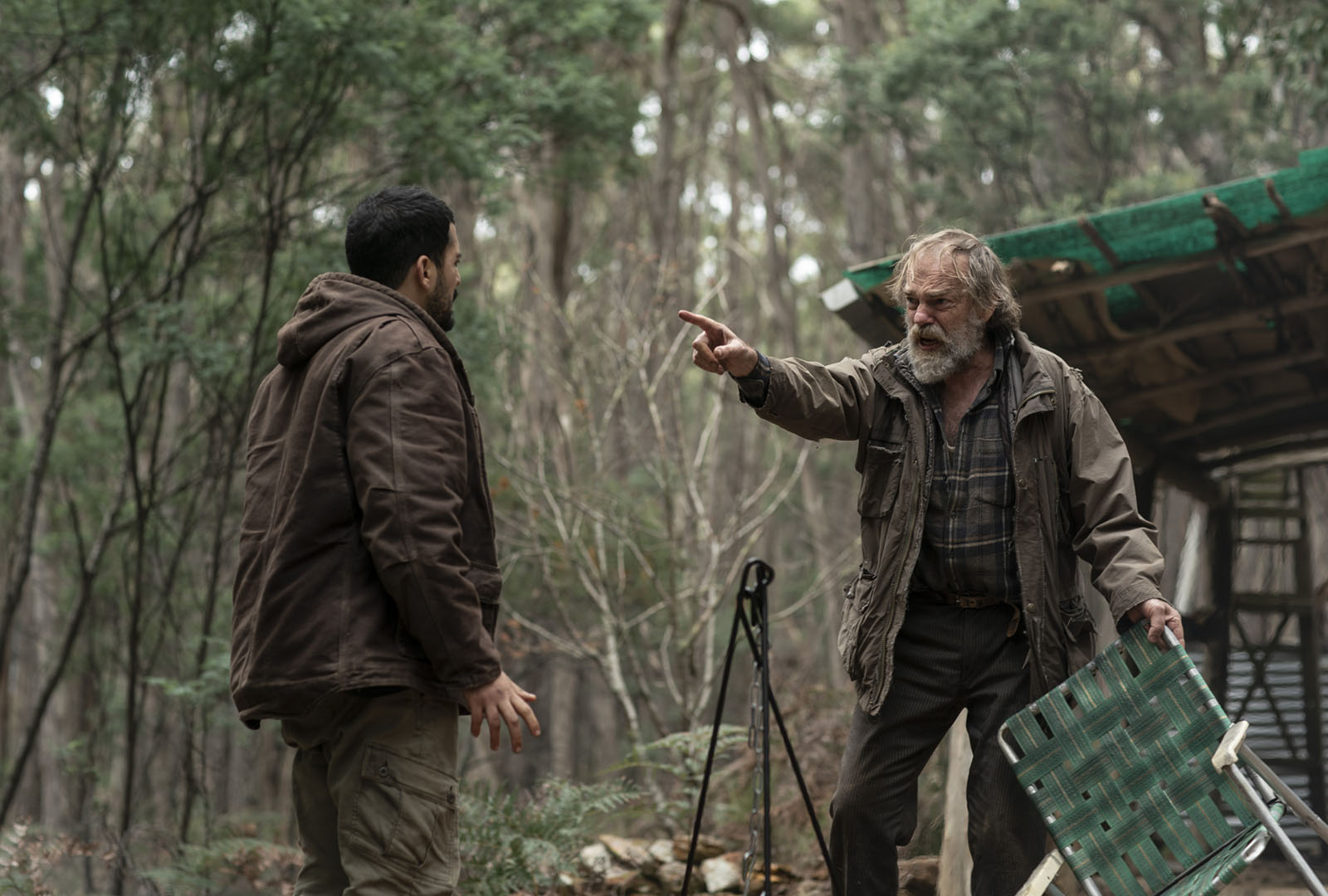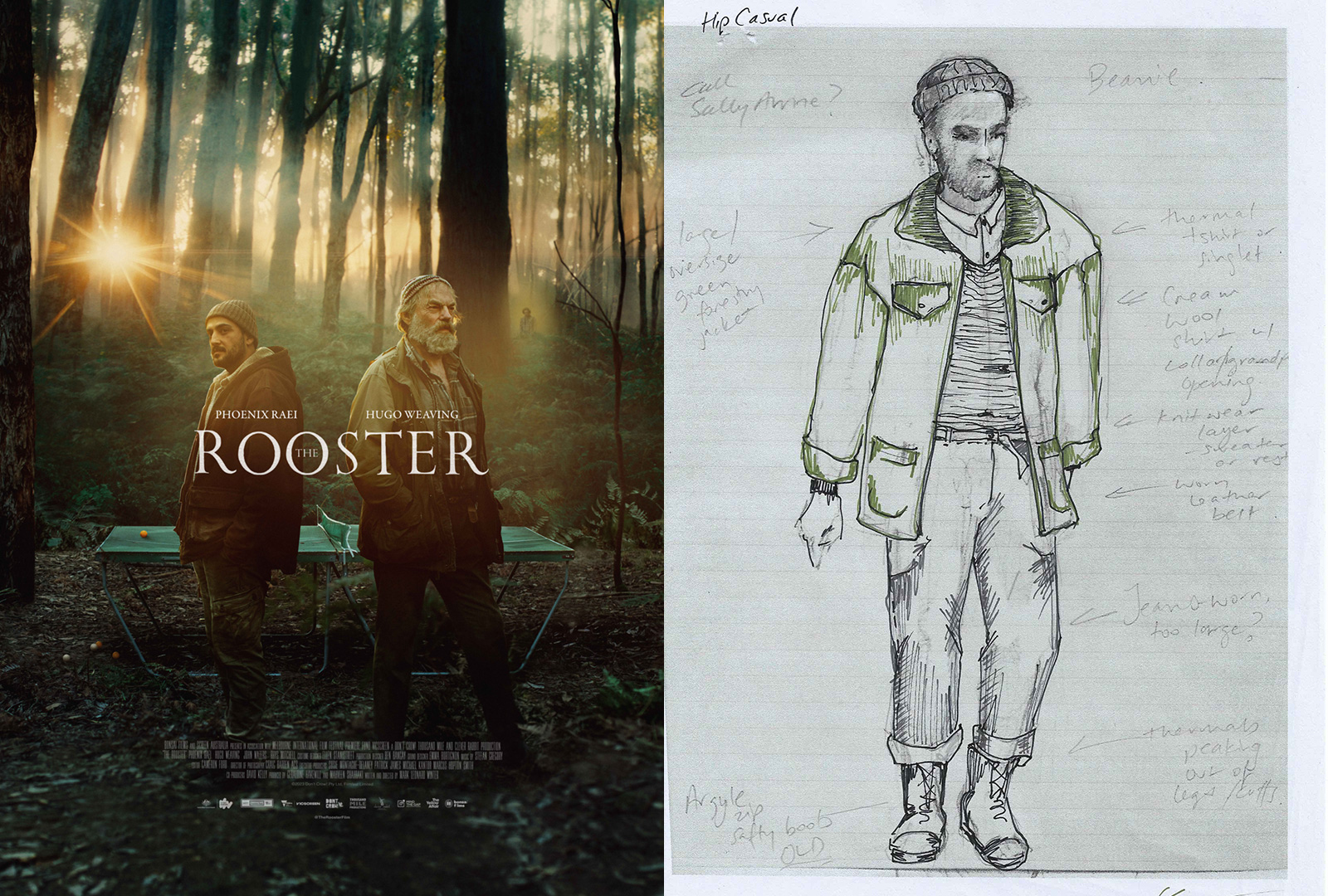2024 AACTA Nominated and NIDA Design alumna Ellen Stanistreet is a creative force in the world of costume design who has transformed a career in high-end bridal gowns into an award-winning journey across theatre and film. With an unparalleled passion for storytelling through fabric, Ellen has navigated the various waters of the industry to emerge as a respected and influential figure.
Have you always wanted to pursue a creative career and what inspired you to go down the path of costume design?
I never thought I’d do an office job or something that was very repetitive. I was raised in a creative home. Most of my earliest memories are of dressing up and imitating period films, as they were a pretty big influence in my family. I fell in love with the idea of costume as a career when I was about 14 and realised it was an occupation. I haven’t changed my mind since then.
What was your experience prior to NIDA and why did you decide to apply for the Master of Fine Arts in Design for Performance?
I studied a Bachelor of Fashion Design when I left school, as I wanted to learn how to become technically proficient in garment construction, not just study design. I then spent about ten years working in various jobs that were peripheral to costume design: as a costume maker for mainstage musicals and the Australian Ballet, and then I opened a shop/studio and created made-to-measure womenswear for a few years, which leant heavily towards bridal. This was great to refine my practical making and patternmaking. Then, I spent several years as the production manager of a high-end bridal couture house, where I oversaw the construction of over 300 gowns a year, as well as managing the team, fitting in a couture context. This all created a really strong practical base for me when I decided to quit work and apply for the NIDA Master. I was 32 and really wanted to move into the industry. I felt that a post-graduate course was the quickest path to that.

Phoenix Raeiand Hugo Weaving (Acting, 1981) in The Rooster. Costume Design by Ellen Stanistree.
Can you talk about some of your highlights while studying at NIDA and some skills you have taken into the industry with you?
My ten months at NIDA were very intense. I learnt a great deal about myself (my weaknesses in particular) and about the industry, on a micro level. NIDA is great as it really is a petri-dish for growing and testing and working under pressure. My favourite part was definitely the daily trip between classes and the workshops when we were designing the shows each semester. Meeting the other technical students, most of whom were much younger than me, with the same passion for creating and crafting, was so motivating and exciting. I really felt like I finally was working in the right world.
What are some of your credits since graduating and how did your training at NIDA helped you with these projects?
I’ve done a lot of really different costume department roles, as my past technical experience kind of landed me in making, to begin with when I graduated. Sewing on True History of the Kelly Gang was a stand-out, from a creative/ crew experience perspective. I love location jobs, and we did one scene on the top of a mountain for that film in a blizzard, which was pretty extreme.
I really enjoyed being extras co-ordinator on Miss Fisher’s Modern Murder Mysteries, as it was 1960’s, so the buying and sourcing for that was very fun, and the team was just full of great people. Extras work can be very fun, with a lot of on-the-fly styling, and big set-pieces.
My first film, the Greenhouse, was a very personal project made with old childhood friends in a team of people who were all learning a lot, including myself. That’s on Netflix now.
The networking that started at NIDA really pushed me through the first few years out – doing set and costume design on some indie theatre shows, and connections with screen design practitioners in Melbourne started the ball rolling. I also got involved with the APDG as a result of being at NIDA, and that allowed me to connect with seasoned practitioners in Melbourne more effectively, in an out-of-work context.

The Rooster movie poster and costume design sketch by Ellen Stanistreet.
Which one are you most proud of?
I’ve designed four indie features, of which the Rooster is currently doing quite well, and that’s great fun to be part of. That was a very hard, cold shoot, on my own in the costume department with very little money. But the script was beautiful, and I was working with awesome people. Being nominated for a 2024 AACTA for that movie is really the icing on the cake.
What is your creative process when designing costumes for a film production?
I read the script once, straight through, and just absorb the story and characters. Then I might put together a general mood board for the production. Then I’ll speak to the director and hear their desires and directions (if that hasn’t happened first). Then I’ll do a breakdown and put together individual character boards and costume outlines – depending on what the script requires. Sometimes there’s drawing, for unique builds or special pieces/looks, but mostly I’ve designed contemporary films so there is more sourcing, referencing, collaging in that phase of the design. Then I’ll source and buy in order to do fittings and share that whole process with the director as required. From the fittings we usually turn a corner and find the right place for the characters, sometimes multiple fittings and re-workings. Costuming depends so much on an actor’s body and body language that really you never know what’s right until you get them in the clothes.
How do you approach understanding and interpreting characters through their costumes? I think for anyone passionate about costume design, our position is that clothing is integral to character expression. If you have an opportunity to convey more information to the audience in a shot via the clothes the character is wearing, the way their hair is, why not take that opportunity? It’s equally as important as production design, or sound design or shot choice. I think every script day is an opportunity to say something, and I don’t ever just think, well, he’s in jeans and shirt, that’s done. I want it to be a beautiful colour, or an interesting texture, something that adds to the mis-en-scene, even minutely.
Can you share about your AACTA Award nominated role on the indie feature film The Rooster and your experience on set working with other NIDA alumni such as Hugo Weaving (Acting, 1981) , Robert Menzies (Acting, 1977), and Deidre Rubenstein (Acting, 1967) ?
The Rooster was a unique experience. I was contacted by Geraldine Hakewell, who is the director, Mark Leonard Winter’s, wife. She produced the film, but I had met her on another show when I was doing extras. She sent me a very beautiful script and I was immediately interested in doing the project. There was nearly no money, so a lot of it was my own stock, or borrowing, and making-do. I had a particular connection to the script because my dad lived as a hermit for much of my life, so I had a special insight into that subject matter and lifestyle, and it was really important to me to explore that onscreen.
The shoot was only five weeks, but we were out in the bush at Geri and Mark’s house in regional Victoria, where most of the locations were, and it was very cold, and dark, and muddy. I was a one-woman costume department(with some honourable mentions to Geri and the 3rd Ad Ciandra, who both helped me out on set a lot.) It was a tough shoot, with lots of nudity, in freezing conditions, but again, the support of a great IC was invaluable at those moments. I think it turned out so well, especially as Mark’s directorial debut, and it’s great to see it’s been so well-received.
It was a bit of a dream working with Hugo Weaving, as I grew up watching him in Lord of the Rings and The Matrix. He was such a fantastic, generous professional who was so considerate and interested in my take on the subject matter. He was also very good about doing fittings in a tiny cold spare room in the house on location at all hours of the day. As was Phoenix. Those shoots are only possible with great people in the team.
Robert and Dierdre were both of course also consummate professionals, and although they had very small roles, they were great to dress and committed to sad, suburban country aesthetic we had for them. The experience was very unique, and definitely took everything I had to get through it.
What advice do you have for young creatives wanting to pursue a career in costume, particularly those interested in study at NIDA?
You need to be honest about how much you want to do this job: what are your motivations? For me sometimes it’s as simple as just loving film and going to the movies. That’s always thrilled me, and it keeps me interested in jobs even when I don’t necessarily love the content or story. You have to be prepared to work extremely hard, and realise this industry is not really supported socially in any way. You need people who can support you and look after you (literally sometimes), being a freelancer is not simple to manage. Don’t take rejection personally, even though it is. You are sharing your creative skills, but you don’t need to compromise your health or integrity. There will be another opportunity along the way. NIDA is a great place to learn skills, and meet people – be open and interested.
